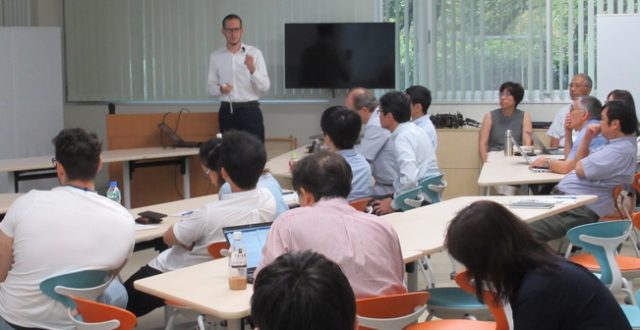
Report on the 3rd WRHI Lecture( 9/11 )
Event Reports
WRHI Lecture 3 Report (September 11, 2017)
The WRHI lecture meeting, in which WRHI invited researchers who are active in the front lines of the world to provide updates on the latest topics, was held the third time on September 11. Faculty, staff and students were gathering in the open communication space of the Suzukakedai R2 building, which was almost full when the Lectures began. Professor Masaaki Azuma of Frontier Materials and Structures Laboratory chaired 2 lectures from the materials field and 1 from the robotics field, this time.
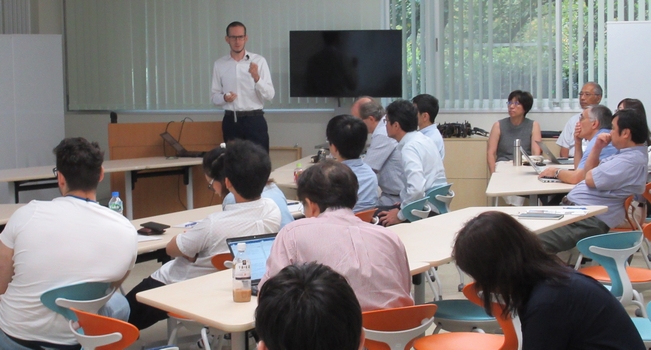 The scene of Lecture meeting (left)
The scene of Lecture meeting (left)
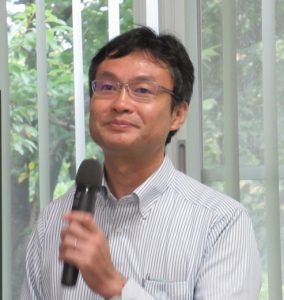 and Professor Azuma of the chairman(right)
and Professor Azuma of the chairman(right)
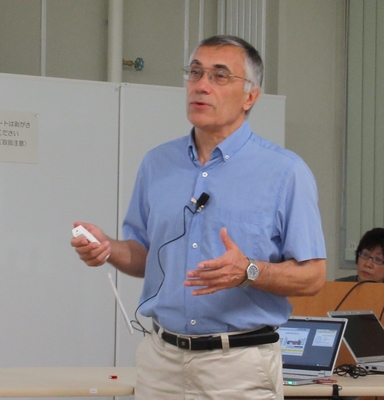 Dr. Volodymyr Chernenko
Dr. Volodymyr Chernenko
The first lecture is “Magnetic shape memory materials for actuation and energy conversion” by Dr. Volodymyr Chernenko. He was invited from the University of Basque Country, Spain, as an Appointed Professor of the Frontier Materials and Structures Laboratory. Today’s theme is related to ferromagnetic shape memory alloys (FSMAs). Speaking of shape memory, we imagine a large and reversible deformation of material due to the thermal or stress induced transformation between two crystallographic phases, cubic austenite and tetragonal martensite, but this time it is due to the application of magnetic field. For this, a material called a Heusler FSMA is used. Such material exhibits a deep lattice softening near the transformation temperature and a strong magnetoelastic coupling leading to the possibility of magnetic field induced reversible movements of twin boundaries in martensite in similar way as mechanical stress does. Unlike conventional shape memory alloys driven by temperature change, FSMAs allow a high-speed actuation (~ kHz) by a magnetic field which facilitates novel applications such as, for example, driving part of a sewing machine needle or high precision displacement sensor etc. FSMA material works as a device with certain functions. Although it is still a new area of research, magnetic shape memory materials are a field of great fun, including many applications.
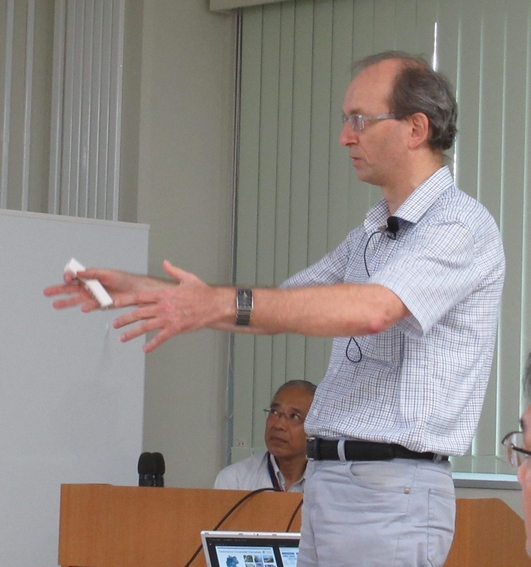 Dr. Jürgen Werner Rödel
Dr. Jürgen Werner Rödel
Next, Dr. Jürgen Werner Rödel invited from the Institute for Materials Science at Technische Universitat Darmstadt in Germany gave a lecture. The theme is “Lead-free piezoceramics”. In recent years, the use of harmful elements has been restricted globally in the field of electronic components for environmental measures. For lead, it was able to be driven out of solder, but the same has not been achieved for piezoelectric ceramics because of performance problems. Speaking of piezoelements, it is known as an energy conversion device between electricity and machinery, and it is used in many devices such as micro positioning devices, ink jet printers, thread guides of textile machines, and micro motors. For this reason, lead-free piezoelectric elements have become an urgent issue. Therefore, studies on materials that replace lead have been conducted, and at the present time new materials based on Alkali-niobium, Bismuth, Barium titanate, and so on are drawing attention, studies on the structure, properties, mechanical strength are proceeding. Currently it has not reached mass production, but lead piezoelectric ceramics will be reduced in volume in near future. Protecting the global environment is also an important role of science and technology.
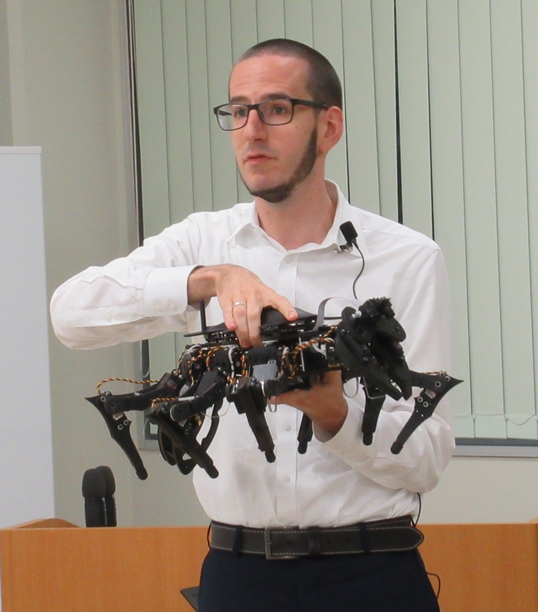 Dr. Ludovico Minati
Dr. Ludovico Minati
The last lecture was “Versatile bio-inspired control of a hexapod robot using a network of non-linear oscillators” by Dr. Ludovico Minati invited from the Complex Systems Theory Department of the Institute of Nuclear Physics – Polish Academy of Science in Kraków, Poland and from the University of Trento, Italy. The purpose of the study is to operate a hexapod robot like an insect, such as an ant or cockroach, by making it generate some set of signals in turn used to try to control various motor actions. The nervous system of an organism is made up of a complex network, and its part responsible for walking control can perhaps be replaced with electronic circuits wired up to consist of a central and many local pattern generators. This controller made it possible to show various aspects of insect walking by setting only five parameters, so it can be useful even for control via brain computer interfaces. Two live demonstrations of the hexapod robot were given, one walking in a cockroach-like posture according to the so-called wave gait, usually associated to slow speed, and one walking in an ant-like posture according to the so-called tripod gait, usually associated to faster speed such as during escape. There are various approaches to the study of brain science, but this method was convincing as a means to demonstrate the hypothesis that some phenomena can be replicated even in small electronic networks.
